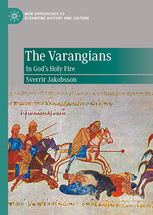Climate change is terrible news for just about everyone but one upshoot is that it’s doing wonders for archaeology. The Lendbreen glacier in Norway’s Breheimen national park has been melting at a terrifying rate and now measures just 30 percent of what it was 30 years ago. A decade ago, the area caused a sensation among archaeologists when a 4th century wool tunic was discovered, largely intact. This may have been removed by some poor soul at the moment of freezing to death, when paradoxically the body feels very warm.
Since then, a treasure trove of finds have been made. These span the period from the 3rd century to the end of the Middle Ages, peaking at around the year 1000 at the height of the Viking Age. The artefacts are assumed to be from a mountain pass which connected various parts of Norway and perhaps places further afield. The Cambridge Review of World Archaeology says:
“That the dates cluster in the Viking Age, particularly around AD 1000, is unlikely to be coincidental as it was a time of high mobility, emerging urbanism and increasing political centralisation in Scandinavia, and a period in which markets around the Irish, North and Baltic Seas were growing.”
Perhaps an ancient trade route of the Eastern Vikings has been discovered? In any case, archaeologist Lars Pilø has recently discussed the six most interesting items in Artnet News. Among these are a Viking Age tinderbox, a horse snowshoe and a strange kitchen item which may also have been used as a tent peg. The route was abandoned in the late Middle Ages, perhaps as a cause of worsening climate or the Black Death. Covid-19 has made it difficult to travel to the site lately, so it can be said that climate change and pandemics connect our times with those of the finds in more ways than one.
The top six items:
The full story from Cambridge:



